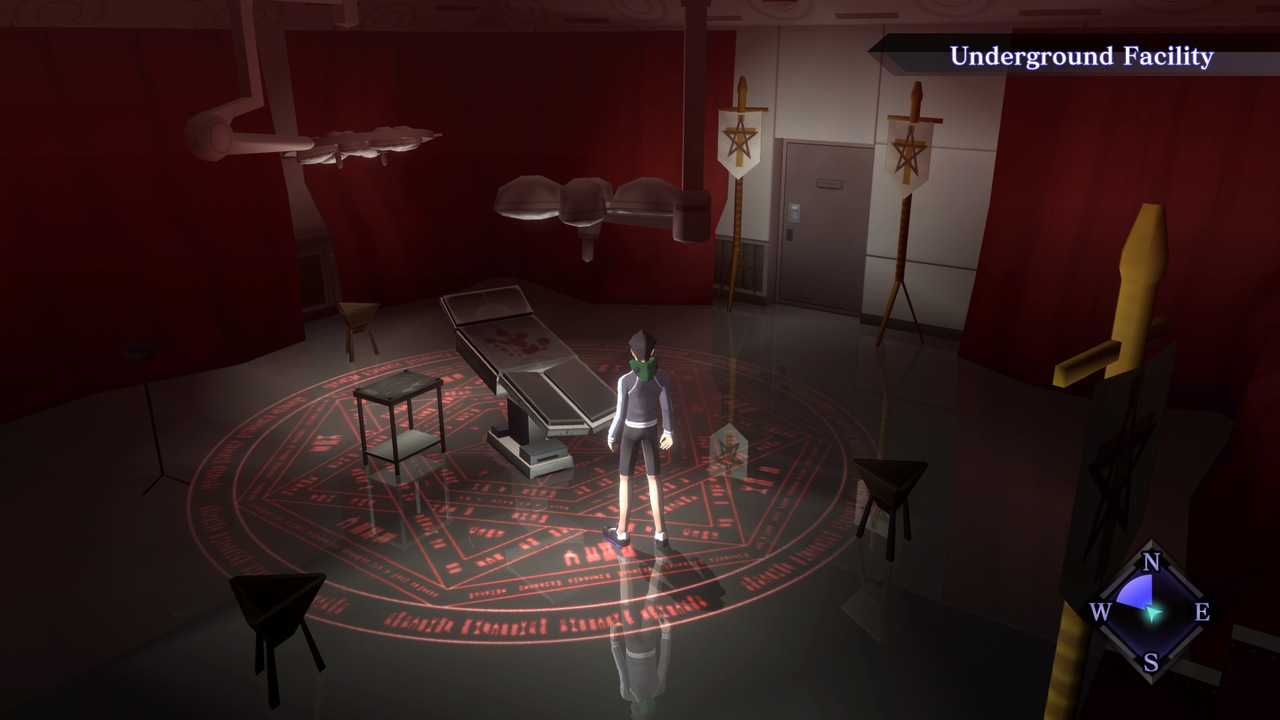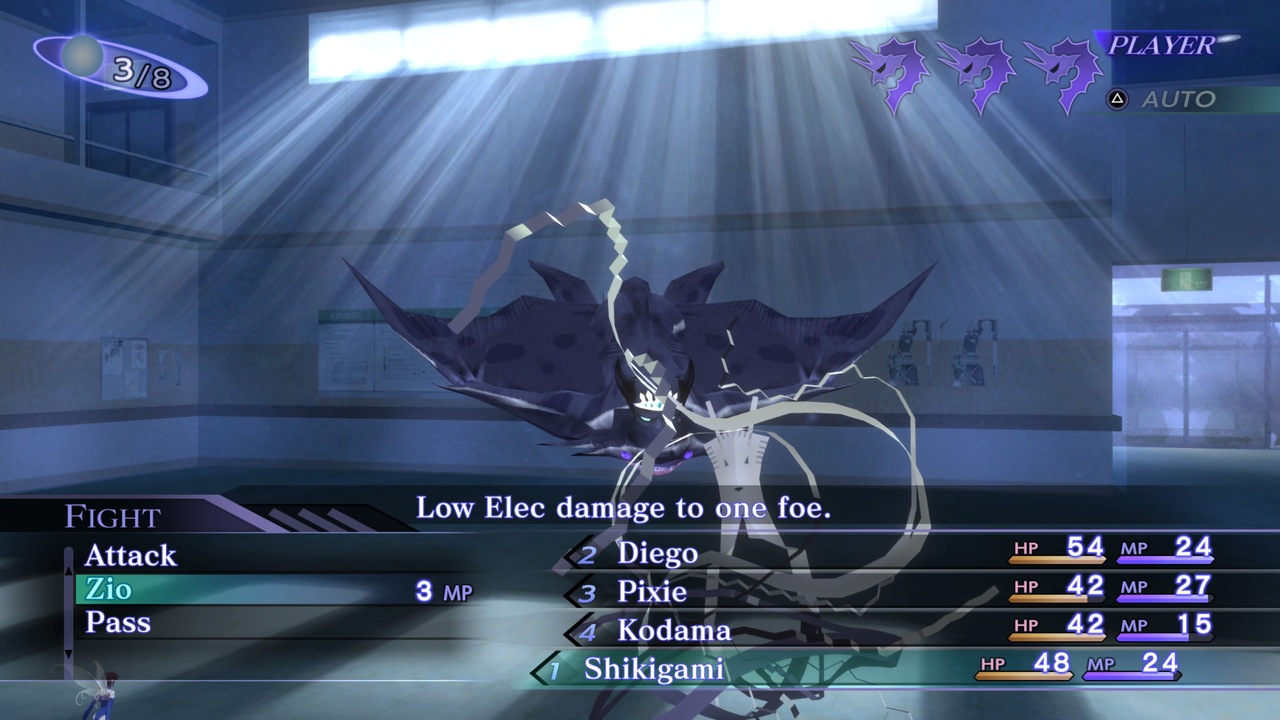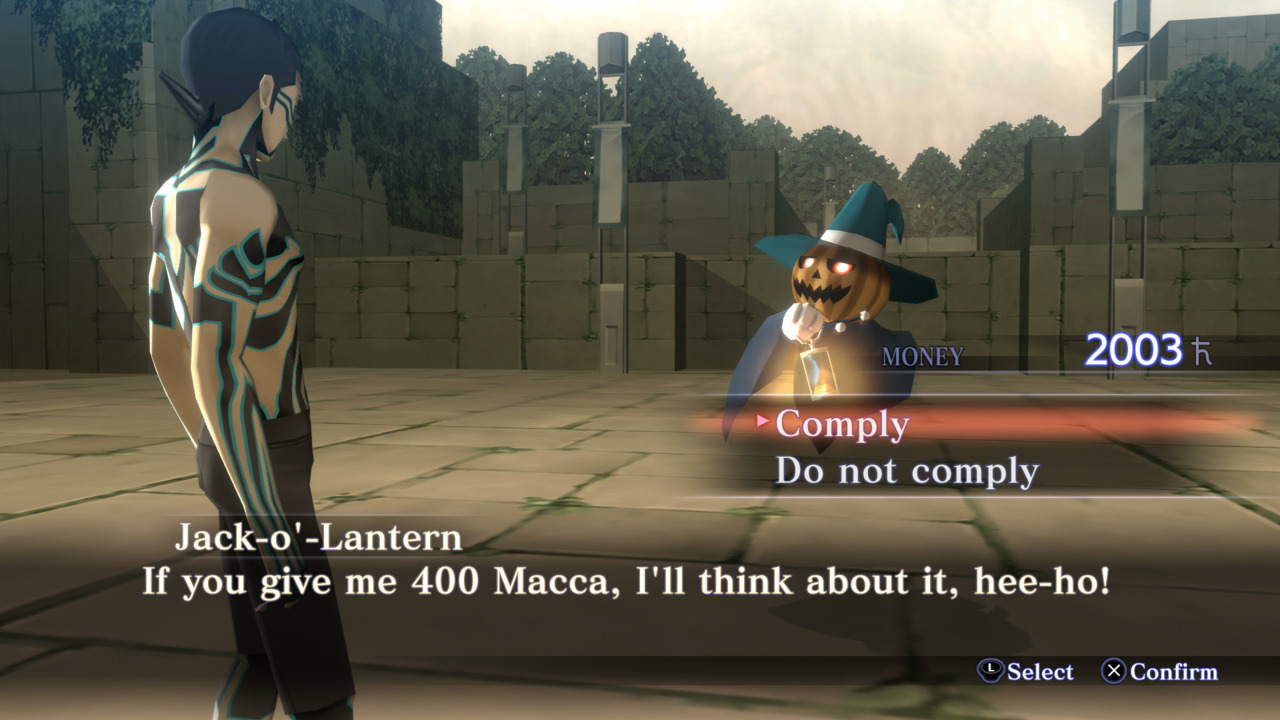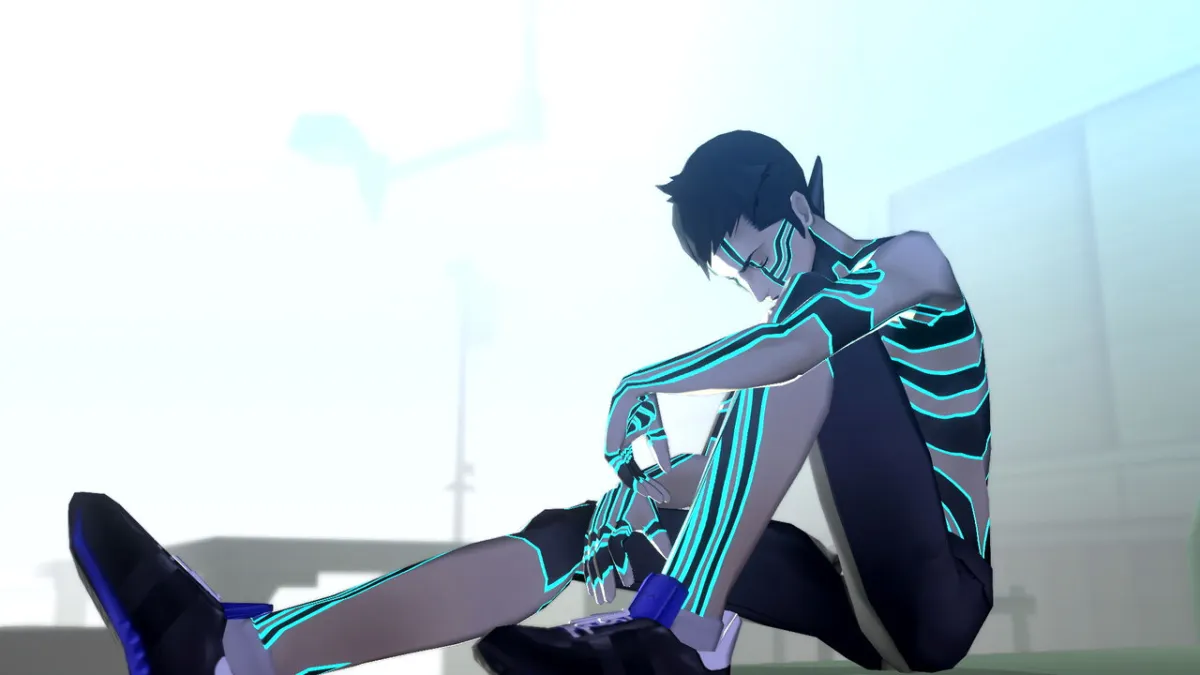Shin Megami Tensei 3 Nocturne is one of those games that I’ve heard a lot of great things about, but I’ve never actually gotten around to playing. Now, with the HD remaster on PC, PS4, and Switch, I finally had the chance to check out this 17-year-old RPG that people love so much. My time with the HD remaster of Shin Megami Tensei 3 Nocturne was interesting, to say the least. There’s a lot to like here, but ultimately, it’s still a 17-year-old PS2 game that really hasn’t had much work done to it. I really like Nocturne, but I wish the remaster was a bit more in-depth than it actually is.
The remastered version of Nocturne does have a few notable improvements over the original. There’s now full English and Japanese voice acting, all of which is very well done. Skill inheritance is no longer random, so you can pick and choose which skills to pass onto newly fused demons. There are new difficulty settings to make the game more accessible for casual players. The suspend save feature allows you to save and quit from anywhere in the game. These are all heavily appreciated additions that make the game much more convenient to play, but that’s the extent of the new features added in the remaster.

Textures and models have been slightly touched up, but for the most part, this is just a simple upres of the PS2 version of Nocturne. Prerendered cutscenes still play in their original format, and they’re noticeably out of place next to the game’s new HD coat of paint. They maintain the 4:3 aspect ratio and don’t appear to be upscaled at all. The music is incredibly compressed, which is a shame because the tracks themselves are really good. Some textures are fairly low resolution as well, and the lack of detail in the environments makes it harder than it needs to be to navigate Nocturne’s maze-like dungeons that are already easy to get lost in. For a $50 rerelease of a 17-year-old PS2 game (with a $70 deluxe edition), I really would have appreciated something more than a slight HD facelift, especially for a game that is loved by so many.
Despite my problems with the remaster, though, the game just kept pulling me in deeper and deeper. This is a fantastic RPG at its core, and it (mostly) holds up. Outside of early 2000s JRPG tropes like a high encounter rate and maze-like dungeons consisting of copy and pasted corridors, Nocturne stands the test of time fairly well. The game has an incredibly unique atmosphere. Nocturne’s rendition of post-apocalyptic Tokyo is very different from the many other post-apocalypses of the gaming world. There aren’t many other people in the ruined hellscape that was once Tokyo, and the few ghostly spirits and demons that remain don’t have much to say to you. It’s an indifferent, barren world. An unrivaled sense of otherworldliness permeates Nocturne. Everything is simultaneously familiar and foreign, and the feelings of uneasiness never quite go away.
The game doesn’t waste any time getting started, dumping you into a dungeon within the first hour. The opening hour of the game quickly introduces you to the main cast of characters, throws a bunch of proper nouns like Conception and Magatama at you, and then lets you loose in post-apocalyptic Tokyo with more questions than answers. It’s a lot to take in at first, but this confusion is a major driving force in the plot. The game dumps a lot of information on you at once, and the urge to find out why everything is happening is a very compelling reason to explore. It’s a very simplistic plot on the surface, but things slowly begin to unravel as the game drip feeds you plot points over the course of the game. Nocturne has a good story, but it’s definitely a slow burn that lets dungeon-crawling take the front seat for most of the game.

There’s a lot of combat in Nocturne, and the game’s battle system is deceptively simple. The Press Turn system gives your team and the enemies four actions they can perform before the end of their turns. However, exploiting a weakness or scoring a critical hit will only consume half of an action, essentially granting you eight actions per turn if you play your cards right. However, certain actions like missing an attack will consume two actions, and all of these rules apply to the enemies as well. This means you can absolutely steamroll a group of demons by exploiting their weaknesses, but the same can happen to your team in the blink of an eye. It’s a simplistic combat system at first glance, but there’s an underlying layer of strategy in the Press Turn system that keeps battles interesting. It also encourages buffs and debuffs to increase your allies’ critical chance or evasion, making support skills just as useful as offensive abilities. It’s deeply satisfying to decimate demons before they can even begin their first turn, and this satisfaction prevents the hours of dungeon-crawling from feeling too monotonous.
Because having the correct abilities is so important to success, party composition is incredibly important. The series’ signature demon negotiation system is present in Nocturne, and while it’s not as deep as it is in newer titles, recruiting demons to build your dream team is still as compelling as ever. Your character can talk to any demon and convince them to join your group as long as you perform a small favor for them or pay them enough money. You can then fuse demons together to create new ones, passing skills along to create more efficient allies. In the remaster, skill inheritance is no longer random, meaning you can actually pick and choose which skills to pass on during fusion instead of just hoping for the best. This change brings the fusion system more in line with its implementation in newer games, and it saves a lot of time and frustration. You can also build your own character in several different ways, upgrading the right stats when you level up and equipping Magatama that allow you to use different skills. If you’re really into dungeon-crawling and creating a powerful party that can crush any weakness, then there’s a lot to enjoy in Nocturne.

Shin Megami Tensei 3 Nocturne is a great RPG, there’s no doubting that. Fans and critics alike love the original release, and fans of the original will absolutely adore the remastered version. In its current state, however, Shin Megami Tensei 3 HD Remaster is a full-priced barebones remaster of a 17-year-old PS2 game that’s starting to show its age. The new quality of life features that were added to the game like voice acting and the suspend save feature are appreciated, but this remaster falls flat when compared to other recent revivals of classic titles. Still, the game itself holds up for the most part. There aren’t many other games like it, and fans of the genre will appreciate its distinct style. Shin Megami Tensei 3 Nocturne remains a solid JRPG even today, but the remaster could have gone a bit further at this price point.












Published: May 18, 2021 09:00 am